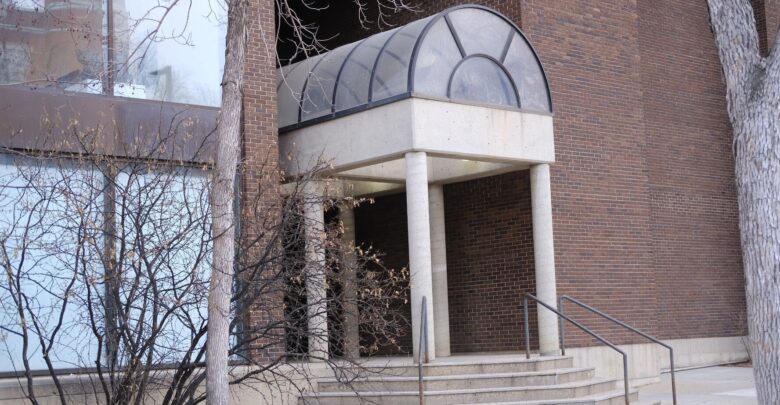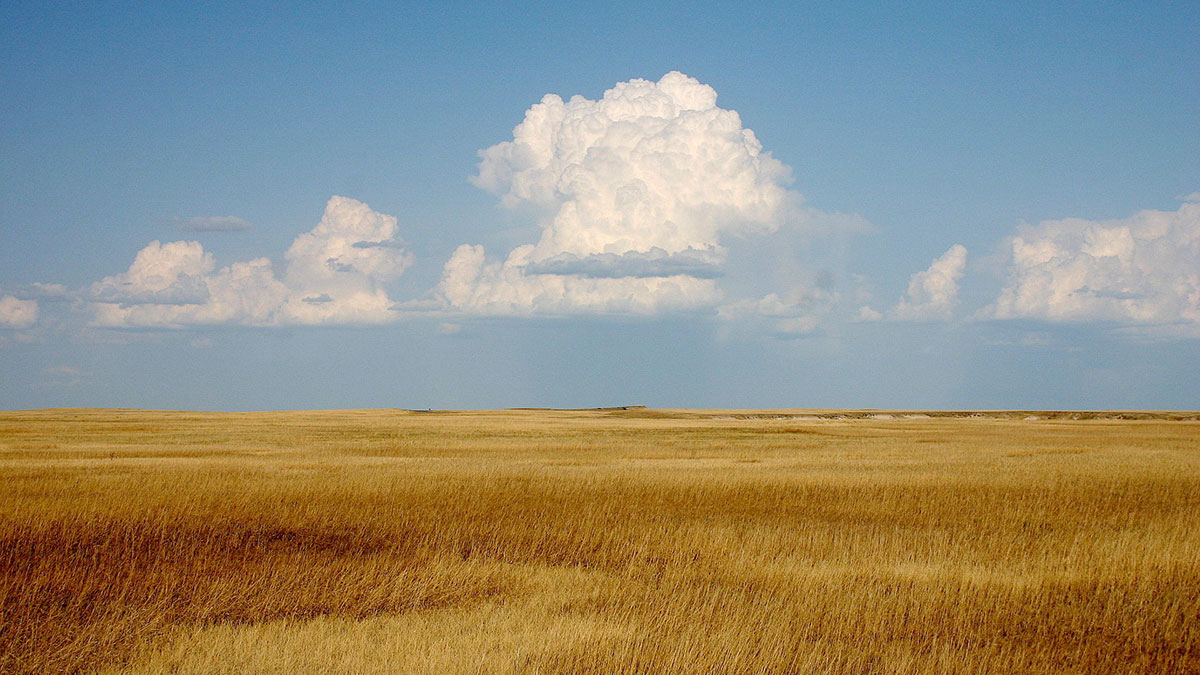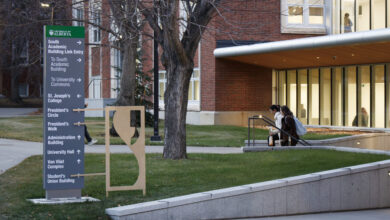Concerns with the state of the arts in Alberta
We need to prioritize all of the arts, not just the current economically successful ones. Small, local projects have a great impact on our province as well.
 Macy Wong
Macy WongAll of the arts sectors in Alberta are critical — including circus arts, deaf and disability arts, Indigenous arts, literature, and everything in between. The success of the arts and our artists reflects back on our communities and cultures.
Typically, the most economically-successful projects — and the ones that receive the most funding — are those that are quite mainstream. But, there’s more to the arts, and to Alberta, than just that. If we want Alberta to be on the map for the arts, we can’t solely focus on what’s currently raking in the dough.
An economic boom in Alberta’s film and television industry — should it be our main focus?
The film and television sector has had increasing successes and points in a promising new direction for Alberta. As such, it deserves, and has rightly gotten, quite a bit of attention recently, both by fans and creators alike.
Award-winning HBO show The Last of Us (2023), starring Pedro Pascal and Bella Ramsey, generated a lot of buzz before its release, as fans long-awaited an adaptation of the beloved video game.
The show was filmed entirely in Alberta from 2021-22, making it the largest film production in Alberta to-date. Edmontonians watching could recognize the Alberta Legislature Building and parts of downtown. Overall, the show was filmed in over 180 locations across the province, and it employed many local artists.
Not only is The Last of Us the largest television series production ever filmed in Alberta — it’s also the largest ever filmed in Canada. Unsurprisingly, the show boosted Alberta’s economy. The federal government commissioned Oxford Economics to do a study, which found that the show created 1,490 jobs in the province. The production also spent $71 million on wages for local cast, crew, and production members. An additional $70 million was spent at local businesses. As a result, filming the show in Alberta contributed over $182 million for Alberta’s gross domestic product (GDP).
In a statement provided to The Gateway, Minister of Arts, Culture, and Status of Women Tanya Fir, said that “projects like The Last of Us have helped put Alberta — and the great work of Albertans — on small screens around the world.”
And this isn’t just the case for The Last of Us. A more recent Netflix production, My Life with the Walter Boys (2023), starring Nikki Rodriguez and Noah LaLonde, was filmed across Alberta from 2022-23. Also supporting local businesses and Albertans in the film industry, filming took place in Airdrie, Cochrane, Kananaskis Country, and other locations in southern Alberta.
Large budget productions are vital because they benefit the province’s economy, support its reputation in the industry, and help local cast and crew. But, small budget productions are just as important, and should be given just as much attention.
The Government of Alberta has been investing into the film and television sector, which is critical in order to grow what is currently one of the most successful sectors in the arts. Fir’s statement read that “the Ministry of Arts, Culture, and Status of Women is also assisting the Alberta-made film and television sector sustaining Alberta’s economic momentum.”
“On December 7, Fir announced that $2.8 million in funding for the Alberta Made Screen Industries Program has helped train and retain skilled workers in the province, creating 155 local jobs,” the statement said.
Fir also mentioned the Alberta Made Production Grant, which has supported 106 smaller budget productions since January 2020. These productions have a “combined total of $6.8 million, generating $26.7 million in spending across the province.”
“Every government dollar invested into Alberta’s film and television industry generates four dollars of investment back into the province,” the statement read. Such funding is critical, but the amount of productions that it has supported is few. Albertan artists need support in honing their skills, opportunities for networking, and increased resources in order to take on projects such as productions. As such, organizations like the Banff Centre for Arts and Creativity and the Alberta Foundation for the Arts (AFA) are key.
More funding for the arts from the provincial government is necessary
Fir’s statement supports the idea that the arts in Alberta are important. “The arts are a critical part of Alberta’s unique culture and heritage, and Alberta’s government is dedicated to ensuring we support Alberta’s arts sector and the artists that call this province home,” the statement said.
The arts are critical, which is why it is imperative that each arts sector receives needed funding, not just ones that are currently economically booming. But, according to Fir’s statement, “Alberta is not getting our fair share of funding [for the arts] from the federal government.”
The statement added that in 2021-22, Alberta received six percent of funding from the Canadian Council for the Arts (CCA), “while holding nine per cent of the nation’s artist[s].”
“Alberta also received the lowest funding per capita through CCA in 2021-22, 42.3 per cent less than the national average for provinces and territories. Alberta’s government will continue to advocate for Alberta artist[s] until fair federal funding is achieved,” the statement said.
These federal contributions, although little, are helpful. The CCA’s funding supported 114 arts organizations, 53 groups, and 297 artists in Alberta. According to the assessment, artists cumulatively received $7.5 million in grants, while overall the CCA gave Alberta $28.4 million in grants. The provincial government is right to advocate for more. However, it must step up in funding where the federal government can’t.
“Budget 2023 committed $28 million in funding to support the arts, with $25.6 million in stable funding for the AFA,” the statement said. Although this funding is important, it is less than what the CCA gave in grants. AFA, for example, needs the funding, but so do other organizations in the province that are overlooked. CCA gave the most funding to the Calgary Philharmonic Orchestra and Edmonton Symphony Orchestra. The Banff Centre, however, is seventh on the list of highest funded organizations.
Prioritizing artists and creators in Alberta: more can be done
The Banff Centre has been a foundational pillar in the arts since its inception in 1993. The campus invites artists and creatives to develop artistically, offering multidisciplinary programs and residencies while hosting different festivals and events. Importantly, the Banff Centre supports creators and artists with funding, which is often needed for the success of small projects.
Located in the mountains, it is a cultural hub for creation and learning. If the province is unable to directly support the centre monetarily, it must find other productive ways to support it. Instead, the government chose to fire the Banff Centre’s board of governors in October 2023, and appoint temporary administrator Paul Baay.
Removing a diverse board to oversee the intricacies of an important creative hub showed Albertans that, perhaps, the arts aren’t as important to the government as they say. This is a similar trend that is currently being seen across post-secondary institutions, not just the Banff Centre. The humanities and fine arts are continuously underfunded, and provincial funding usually only addresses seats in other programs.
Arts and humanities students are shown that they aren’t a priority by being put in dingy, forgotten buildings, while their programs are continuously cut or underfunded. If we want the arts in Alberta to thrive, we have to start at the root: the students who will become our province’s artists and creatives.
Big arts projects are undoubtedly important, but it’s the small, weird, and local projects that have the most day-to-day impact. Installations such as the Talus Dome have become iconic, memorialized in every day conversations. Edmonton, for example, is no stranger to public art exhibits, which make the city unique. In a special way, communities gather at local markets or events to support artists and creators. Local art is everywhere, from parks to office spaces. Without the smaller arts, our culture would suffer immensely.
The current success of the film and television industry is remarkable, and it’s amazing that local creatives are able to take part in large budget productions. But we need to help them diversify their skillset and strengthen their community for future generations.
Arts need to be valued and appreciated so that Albertans have room to participate if they want to. Students need to be shown that their passion can become an enjoyable job in the future, but not just in film and television. The arts in Alberta must truly become prioritized by the government and its constituents, for the benefit of the entire province.




